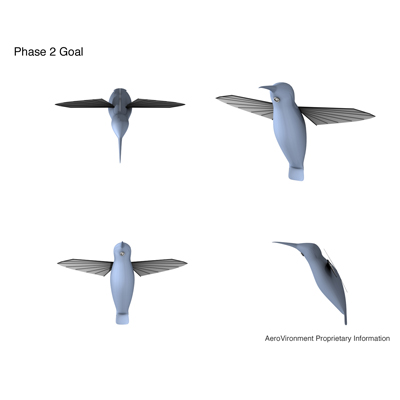Flapping 'nano' aircraft takes flight

Engineers at Aeronvironment (AV) of Monrovia, California, have demonstrated the world's first successful flight of the smallest ever self-powered, rudderless, aircraft with flapping wings.
The nano air vehicle (NAV) is modeled after a large insect or small bird, such as a hummingbird. It can hover indoors under radio control and without wires. "It is capable of climbing and descending vertically, flying sideways left and right, as well as forward and backward," says the company. (See the video at end of the post).
The NAV carries its own power supply and operates by using two flapping wings, which also function as the rudder, elevators, ailerons and engine. "It's extremely complicated and technically challenging to come up with ways to control an aircraft with two flapping wings," AV's Matt Keennon recently told Discovery News. "But this is the closest anyone has come to a rudderless, flapping aircraft."
The aerospace company is tight-lipped about the exact mechanics of the wings citing its confidentiality agreement with the Defense Advanced Research Projects Agency (DARPA), the project's sponsor.
At present, the flying object can hover for only 20 seconds and has limited maneuverability (see video below), but AV is on the right track to create a new class of vehicle systems that employ biological mimicry at an extremely small scale that can provide for new reconnaissance and surveillance capabilities in urban environments.
In fact, DARPA recently awarded AV with an extended contract for accomplishing their latest technical milestone. “The NAV program will push the limits of aerodynamic and power conversion efficiency, endurance, and maneuverability for very small, flapping wing air vehicle systems,” explained Dr. Todd Hylton, DARPA program manager.
As New Scientist notes, the agency wants a 10-gram aircraft with a 7.5-centimeter wingspan that can explore caves and other hiding places, relaying GPS data and images to base. "It will need to fly at 10 meters per second and withstand 2.5-meter-per-second gusts of wind." It's a goal long way off, but certainly achievable.
